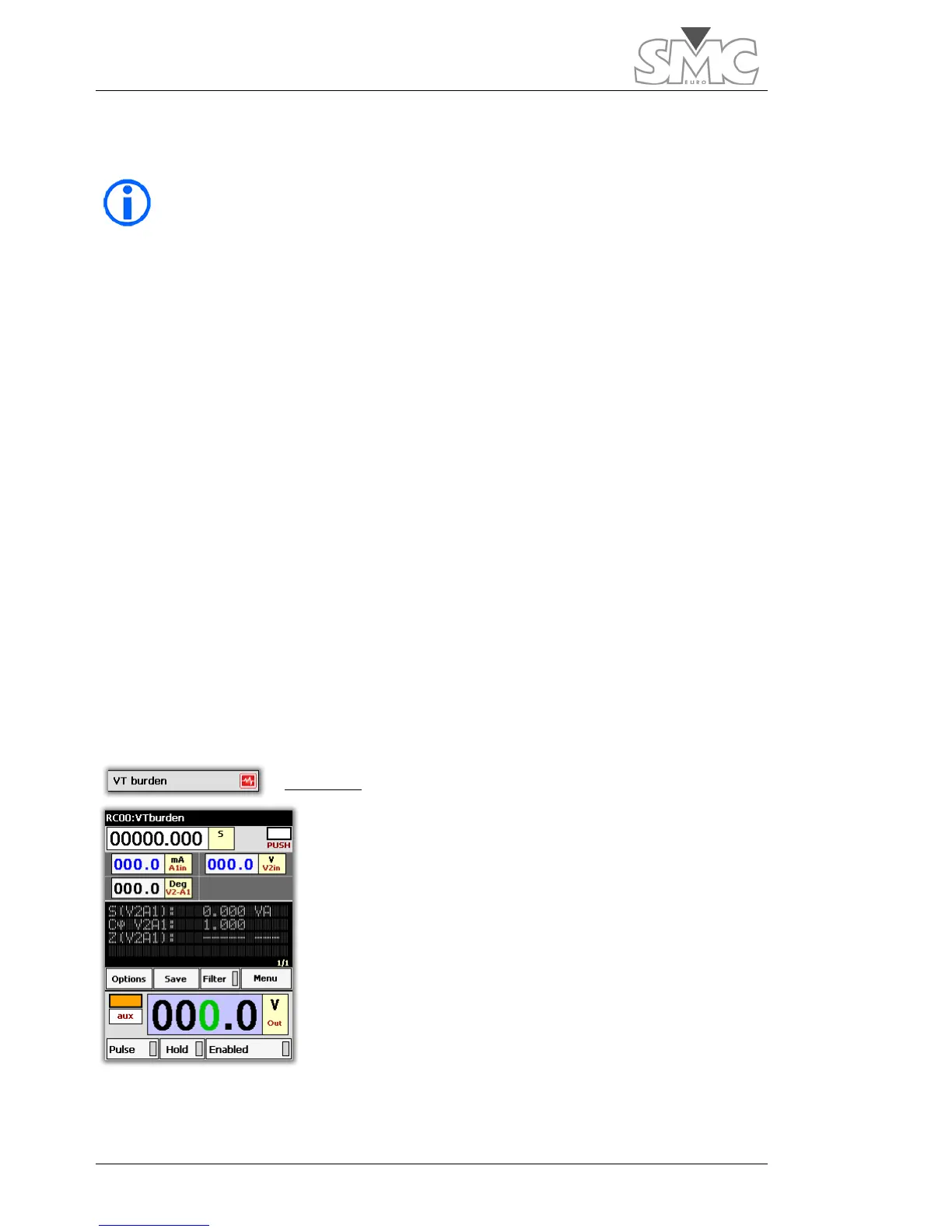Raptor
70
* The level of the measurement input V1 is very low so a cable with a
special connector is used (supplied with the equipment) to shield the
measurements well from possible electromagnetic noise. In ambients
where there is loud noise, the tip of the YELLOW cable (Earth) must be
connected to the earth of the system, or at least to the BLACK tip of the
measurement cable.
Test:
Select and inject the adequate test voltage level.
It is advisable to inject the maximum voltage value that the equipment is able to provide
(230 V) to be at the highest possible point of the nominal primary of the VT.
It will be possible to read the ratio value V2/V1 during the injection, as well as the phase
angle value (polarity), which should be zero or very close to this value*.
If the measurements are seen to be unstable, and their values are continuously changing,
use the FILTER option to see the most stable values.
To stop the injection and finish the test, simply click on the button of the dial.
*The results obtained with this test are exact, but as a very low percentage of Nominal
Primary Voltage of the VT is being injected, the errors that the transformer produces may
be high, both with respect to the ratio and to phase angle. The analysis of where it is or
is not in accordance with what is expected in nominal conditions must be carried out by
the user, bearing this circumstance in mind.
VT Burden
The VTs define their precision class related to a specific
burden called “precision burden”. It is important to know
the real burden that is connected to the VT both in
amplitude and in power factor, and to compare this with the
nominal precision power of VT and thus determine if it is
adequate for the position it occupies.
This template helps measure this burden.

